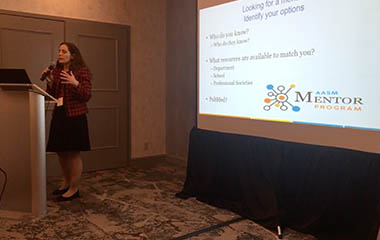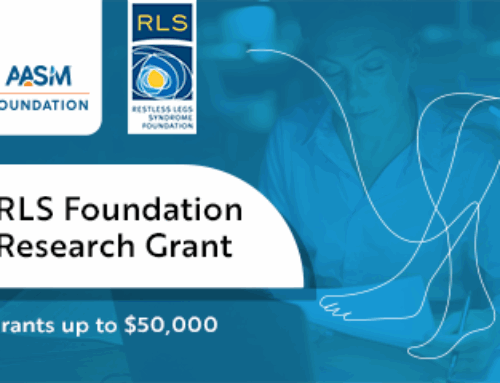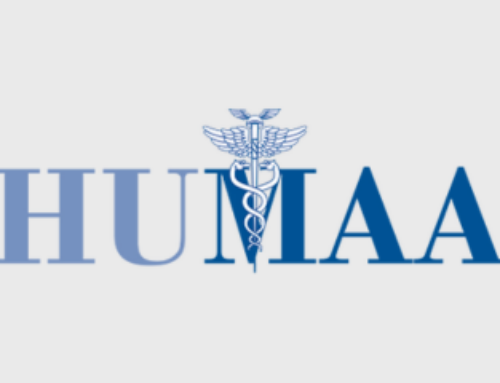Lynn Marie Trotti, MD, MSc, is a two-time recipient of the AASM Foundation Strategic Research Award that led to a large federal grant.
Lynn Marie Trotti, MD, MSc, is an associate professor of neurology at the Emory University School of Medicine and a two-time award recipient of the AASM Foundation Strategic Research Award. Her main research focus is on central disorders of hypersomnolence, with additional interests in the interface of neurology and sleep medicine, restless legs syndrome/periodic limb movement disorder and sleep in neurodegenerative disease.
“There are multiple gaps in knowledge of these disorders, including unknown pathophysiology for most disorders and a limited evidence base for making treatment decisions,” said Trotti. “Current treatments work well for some, but definitely not all patients, and there is a critical need for better treatment options. By understanding the biology of these diseases, we’ll improve our ability to identify new treatments.”
Excessive daytime sleepiness has major impact on quality of life, functional status, and safety – making effective treatment crucial. Trotti’s 2010 Strategic Research Award, “Clarithromycin for the treatment of hypersomnia,” assessed the safety of clarithromycin for the short-term treatment of hypersomnia and evaluated the efficacy of clarithromycin as a wake-promoting agent in patients with hypersomnia. The primary findings of this award were that clarithromycin reduced self-reported sleepiness more than placebo and improved health-related quality of life. However, the study also found that clarithromycin did not improve reaction times on a vigilance task or on a simple reaction time task.
“It is not intuitive that an antibiotic would be useful for sleepiness. Of course, we had scientific reasons to suspect that it would be useful before doing this study, but I think the fact that clarithromycin reduces sleepiness is the thing that people found most surprising,” explained Trotti.
“The study results informed our clinical practice of considering use of clarithromycin in carefully selected, treatment-refractory patients and perhaps the study results provided a little hope to people with treatment-refractory sleepiness,” she said.
While these results are striking, Trotti emphasized the importance of being aware of the trade-offs involved in treating sleepiness with an antibiotic. “We all need to be stewards of our antibiotic supply, which means only using an antibiotic when an antibiotic is the best choice.” Trotti adds that it is very important to know whether clarithromycin is effective, not just a placebo effect, if it is to be used for treatment-refractory hypersomnolence.
Expanding her work on the effects of clarithromycin on sleepiness, Trotti was able to use the preliminary data generated from her 2010 award for a recently awarded National Institutes of Health R01 grant which is aimed at evaluating the mechanisms of clarithromycin. In this new federally-funded grant, Trotti is conducting a large placebo-controlled trial of clarithromycin in people with hypersomnia disorders.
“This project is a mechanistic clinical trial, meaning that we are most interested in why clarithromycin helps with sleepiness, so we will be evaluating the relationship between changes with sleepiness on treatment and potential clarithromycin mechanisms. This includes changes in GABA-A receptor modulation, changes in inflammation, changes in the microbiome, and changes in brain functional connectivity,” explained Trotti.
Trotti is currently working on her 2018 Strategic Research Award, “Informing treatment decisions in the central disorders of hypersomnolence: a pragmatic clinical trial of modafinil versus amphetamines,” which aims at testing the efficacy of amphetamines for the treatment of narcolepsy. Her project will randomize newly-diagnosed patients with narcolepsy type 2 or idiopathic hypersomnia to receive either modafinil, which is the standard of care for central disorders of hypersomnolence, or amphetamine-dextroamphetamine, which is frequently prescribed as an alternative.
This project will address the current gap in determining the effectiveness of these medications in improving patient-centered outcomes, relative safety and tolerability of side effects, and what clinical factors contribute to the response to treatment for both medications.
“This new study will provide answers to a question that comes up all the time in my clinical practice, which I hope will inform decision-making by patients and their providers once we have results,” said Trotti.
In addition to working towards expanding treatment options for people with central disorders of hypersomnolence, Trotti plays an active role in the career development of junior sleep researchers. She chaired the 2017 and 2018 Young Investigators Research Forum, which under her leadership helped equip more than 50 early career sleep investigators with the grantsmanship skills needed to shape their sleep and circadian research interests into fundable projects.
“The best part of the forum is the chance for junior investigators to meet and get advice from experienced investigators. The senior faculty of the forum are internationally-recognized experts in sleep and circadian research, and these faculty come to the forum with the single goal of supporting early career people,” she said. “It highlights the very best of mentoring and professional development, as all faculty at the forum are committed to helping junior sleep researchers,” said Trotti.
Trotti is also actively involved in the AASM Foundation’s new initiative for developing a year-long research fellowship program that supports the growth of early career investigators. Her advice to early-career sleep researchers is simple: Persistence is key!
“This can be an amazing career full of discovery and meaning, but success is not usually a linear path of grant acceptance and results turning out just the way you predicted, so it is important to keep going…and its equally important to have peers or mentors you can vent to when things don’t go right,” said Trotti.






